 W
WA Baja Bug is an original Volkswagen Beetle modified to operate off-road, although other versions of air-cooled Volkswagens are sometimes modified as well. Baja bugs often race in off road desert races such as the Baja 1000. There are different classes for bugs, namely class 11, class 5 1600, and class 5 unlimited. According to desert racing association Score International, class 11 is a stock VW beetle with modifications limited to ground clearance and strength. Class 5 1600 rules state that a 1600 cc VW engine must be used and the car must have the exterior appearance of a "baja bug" with body modification limited to whatever cutting is needed to install a consumer baja kit. Class 5 unlimited is any 4 cylinder VW-style engine, and it must have Baja-style fenders and side panels, and VW-style suspension.
 W
WThe Clubman is a marque of prototype front-engined sports racing cars that originated in Britain in 1965 as a low-cost formula for open-top, front-engined roadgoing sports cars like the Lotus 7, which had been crowded out of the mainstream by rear-engined cars such as the Lotus 23.
 W
WA Daytona Prototype is a type of sports prototype racing car developed specifically for the Grand American Road Racing Association's Rolex Sports Car Series as their top class of car, which replaced their main prototype racing class, specifically Le Mans Prototypes (LMPs). The cars later competed in the merged series of the WeatherTech SportsCar Championship, from 2014-2016, before being phased out and replaced by the Daytona Prototype International class in 2017. They are named after the main series event, the Rolex 24 at Daytona.
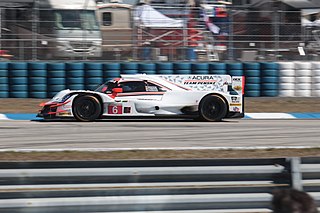 W
WA Daytona Prototype International (DPi) is a type of sports prototype racing car developed specifically for the International Motor Sports Association's WeatherTech SportsCar Championship, as their top class of car, acting as a direct replacement, and spiritual successor of the Daytona Prototypes. They are named after the main series event, the Rolex 24 at Daytona. The class made its racing debut at the 2017 24 Hours of Daytona.
 W
WDiesel 2000 is an FIA circuit racing classification for modified production based touring cars using turbodiesel engines.
 W
WFormula Libre, also known as Formule Libre, is a form of automobile racing allowing a wide variety of types, ages and makes of purpose-built racing cars to compete "head to head". This can make for some interesting matchups, and provides the opportunity for some compelling driving performances against superior machinery. The name translates to "Free Formula" – in Formula Libre races the only regulations typically govern basics such as safety equipment.
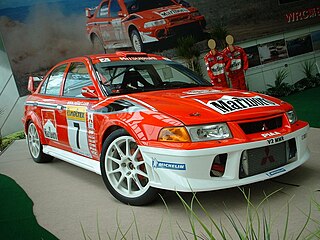 W
WGroup A was a set of motorsport regulations introduced by FIA covering production-derived vehicles intended for outright competition in touring car racing and rallying. In contrast to the short-lived Group B and Group C, the Group A referred to production-derived vehicles limited in terms of power, weight, allowed technology and overall cost. Group A was aimed at ensuring numerous privately owned entries in races.
 W
WGroup B was a set of regulations introduced in 1982 for competition vehicles in sportscar racing and rallying regulated by the Fédération Internationale de l'Automobile (FIA). The Group B regulations fostered some of the fastest, most powerful, and most sophisticated rally cars ever built and is commonly referred to as the golden era of rallying. However, a series of major accidents, some of them fatal, were blamed on their outright speed and lack of crowd control at events. After the death of Henri Toivonen and his co-driver Sergio Cresto in the 1986 Tour de Corse, the FIA disestablished the class, dropped its previous plans to replace it by Group S, and instead replaced it as the top-line formula by Group A. The short-lived Group B era has acquired legendary status among rally fans and automobile enthusiasts in general.
 W
WGroup C was a category of motorsport, introduced by the FIA in 1982 and continuing until 1993. Group C applied to sports car racing, with Group A for touring cars and Group B for GTs.
 W
WGroup GT1 also known simply as GT1, was a set of regulations maintained formerly by the Fédération Internationale de l'Automobile (FIA), for Grand Tourer racing. The category was first created in 1994, as the top class of the BPR Global GT Series, and was included in the 24 Hours of Le Mans. It fell under FIA regulation from 1997, after the BPR series came under the control of the FIA, becoming known as the FIA GT Championship. The category was dissolved at the end of 2011. The category may be split into 4 distinctive eras, from its debut in 1994–1996, 1997–1998, 2000–2009, 2010–2011.
 W
WThe Group N-GT was a motor racing category launched by the Fédération Internationale de l'Automobile in 2000. The first cars were homologated on 1 March, 2000 by Porsche and Ferrari. A total of eight different models from six marques were homologated throughout the class existence.
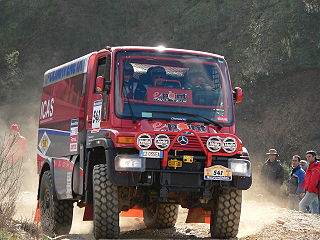 W
WThe Fédération Internationale de l'Automobile launched Group T4 in 1990 to facilitate rally trucks in rally raid competitions. The regulations are included in appendix J of the International Sporting Code.
 W
WA Le Mans Prototype (LMP) is the type of sports prototype race car used in the 24 Hours of Le Mans, FIA World Endurance Championship, WeatherTech SportsCar Championship, European Le Mans Series and Asian Le Mans Series. Le Mans Prototypes were created by the Automobile Club de l'Ouest (ACO). The technical requirements for an LMP include bodywork covering all mechanical elements of the car. Currently there are three classes within Le Mans Prototypes, called LMP1, LMP2 and LMP3.
 W
WThe Le Mans Prototype Challenge was a spec sports prototype formula created by the Automobile Club de l'Ouest (ACO), organisers of the 24 Hours of Le Mans, and sports car constructor Oreca. The formula is intended as part of a ladder system for young and upcoming drivers into the world of endurance racing while also serving as a value engineered entry for drivers and teams into Le Mans Prototypes due to limitations on manufacturers and suppliers.
 W
WA mini sprint is an American type of open-wheel racing vehicle. Mini sprint cars resemble the shape of a full-size sprint car and the size of a midget car. Although often used liberally to describe several different types of motorcycle-powered open-wheel racing cars, the term mini sprint actually applies to cars that have an upright-style chassis, a center-mounted 4-cylinder motorcycle engine with a displacement between 750 to 1200cc, and dimensions and appearance that are similar to today’s midget. Mini sprints are chain driven and use 13-inch (33 cm) wheels and tires.
 W
WPro Stock Motorcycle, formerly known as Pro Stock Bike, is a motorcycle drag racing class that is the two-wheeled equivalent of Pro Stock. It has been a feature of NHRA drag racing since the 1980s when it was added to the professional class structure and has since spread around the globe. The first points championship season was the 1987 NHRA season. Frames are purpose-built specifically for drag racing and are not based on their road-going counterparts.
 W
WQuarter Midget racing is a form of automobile racing. The cars are approximately one-quarter (1/4) the size of a full-size midget car. The adult-size midget being raced during the start of quarter midget racing used an oval track of one-fifth of a mile in length. The child's quarter midget track is one quarter that length, or 1/20 mile.
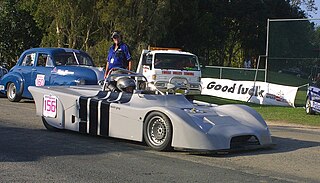 W
WSports 2000 is a restricted-rules class of two-seat, mid-engined, open-cockpit, full-bodied sports-prototype racecar used largely in amateur road racing. Sometimes known as S2000 or S2, the class was developed by John Webb, then of the Brands Hatch racing circuit in England, as an affordable form of sports car racing, essentially a sports car version of Formula Ford 2000. The key attributes of the class were a body design reminiscent of two-liter Group 6 sports racing cars like the Chevron B21 and Lola T-212 but with an ultra-reliable and inexpensive drivetrain comprising a two-liter "Pinto" overhead camshaft engine with very limited allowed modifications and the well-proven, VW-based Hewland Mk 9 transaxle. S2000 aerodynamics continued to evolve beyond their 1970s Group 6 roots, with very 'slippery' cars featuring spats over the wheels becoming the norm.
 W
WSuper 2000 is an FIA powertrain specification used in the World Rally Championship, the British Touring Car Championship, the World Touring Car Championship, and other touring car championships. The engines were originally 2 L naturally aspirated, and later being also allowed 1.6 L turbocharged units producing approximately 280 bhp.
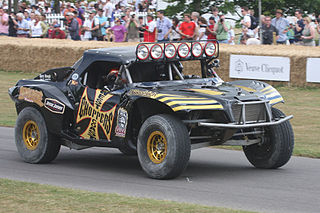 W
WA trophy truck, also known as a Baja truck or trick truck, is a vehicle used in high-speed off-road racing. This is an open production class and all components are considered legal unless specifically restricted.